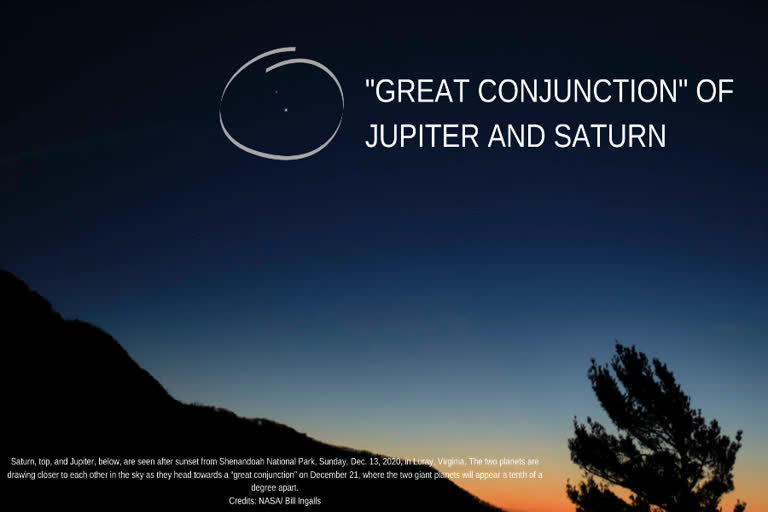Washington: In 1610, Italian astronomer Galileo Galilei pointed his telescope to the night sky, discovering the four moons of Jupiter – Io, Europa, Ganymede, and Callisto. He also discovered the rings surrounding Saturn.
Thirteen years later, in 1623, gave birth to an astronomical event, "Great Conjunction.” This conjunction happened when Jupiter and Saturn, traveled together across the sky and Jupiter caught up to and passed Saturn.
The planets regularly appear to pass each other in the solar system, with the positions of Jupiter and Saturn being aligned in the sky about once every 20 years.
What makes this year’s spectacle so rare, then? It’s been nearly 400 years since the planets passed this close to each other in the sky, and nearly 800 years since the alignment of Saturn and Jupiter occurred at night.
On the 21st, they will appear so close that a pinkie finger at arm’s length will easily cover both planets in the sky. The planets will be easy to see with the unaided eye by looking toward the southwest just after sunset.
The closest alignment will appear just a tenth of a degree apart and last for a few days.
Also Read: SA-NASA's Sun-observing SOHO mission marks 25 yrs in space
“Conjunctions like this could happen on any day of the year, depending on where the planets are in their orbits,” said Henry Throop, an astronomer in the Planetary Science Division at NASA Headquarters in Washington. “The date of the conjunction is determined by the positions of Jupiter, Saturn, and the Earth in their paths around the Sun, while the date of the solstice is determined by the tilt of Earth’s axis. The solstice is the longest night of the year, so this rare coincidence will give people a great chance to go outside and see the solar system.”
For those who would like to see this phenomenon for themselves, here’s what to do:
- Find a spot with an unobstructed view of the sky, such as a field or park. Jupiter and Saturn are bright, so they can be seen even from most cities.
- An hour after sunset, look to the southwestern sky. Jupiter will look like a bright star and be easily visible. Saturn will be slightly fainter and will appear slightly above and to the left of Jupiter until December 21, when Jupiter will overtake it and they will reverse positions in the sky.
- The planets can be seen with the unaided eye, but if you have binoculars or a small telescope, you may be able to see Jupiter’s four large moons orbiting the giant planet.
Also Read: NASA names Artemis team of Astronauts, including Indian-American Raja Chari for Early Moon Missions



